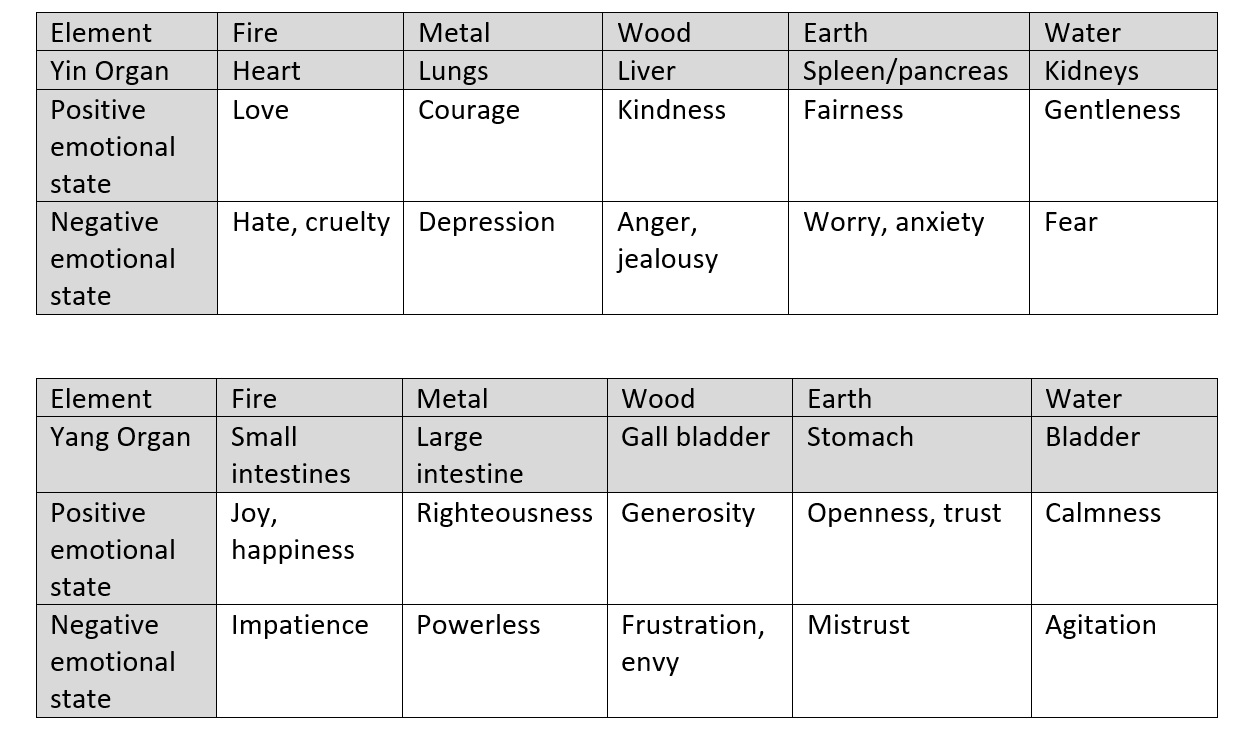Virtue Cultivation Practice
As mentioned in the introduction to this section, according to Taoist theory, the organs are not only responsible for physical functioning, they also are responsible for our emotional states. There is a particular positive emotional state and negative emotional state associated with each major organ. They believe that if our internal organs are functioning well, then our emotions will be positive and balanced; but if there is a dysfunction in one of our organs, then we will experience the concomitant negative emotional state of that organ.
As a result, the Taoists believe that we can help to heal disorders in our organs by working on the positive emotional states, or virtues, associated with those organs.

An interesting feature of this understanding is that one can work on negative traits indirectly by focusing on the positive traits associated with the same organ. For example, to manage fear, work on gentleness; to manage anxiety, work on openness and trust; to manage anger, work on kindness.
The following exercise creates an internal feeling of peacefulness and calm through the acknowledgement of the different virtues with respect to their “seats” in the bodily organs.
This practice is designed to nourish the internal organs while cultivating the positive virtues associated with each one. By combining the Inner Smile technique with affirmations, we reinforce the connection between our body, emotions, and mind, fostering a deep sense of balance, harmony, and self-awareness.
Practice Guide
The exercise is provided in the video below.
[INSERT VIDEO]
A written description of the exercise is provided at the Exercise Files tab.
After you have completed the exercise, write down in your journal what happened for you during the practice.
The video contains the short form of the exercise. You may want to practice the longer form of the exercise which then goes on to include the Yin organs as well, with the associated affirmations:
- Small intestine – “I am joyful”;
- Large intestine – “I am righteous”;
- Gall bladder – “I am generous”;
- Stomach – “I am open and trusting”;
- Bladder – “I am calm”.
